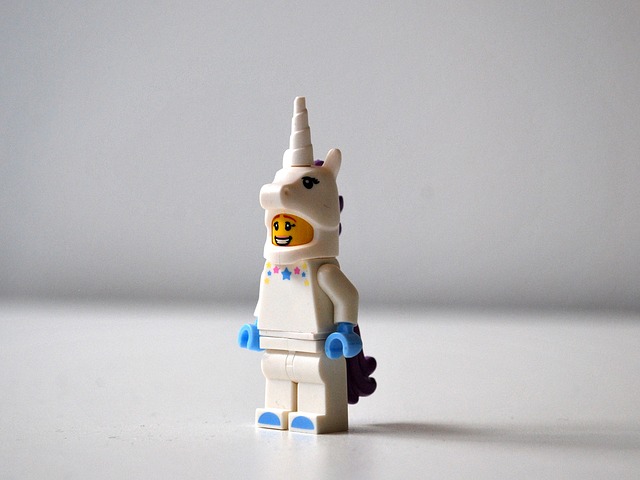 Last week we talked about reverse messaging and the power of changing your perspective to create a more effective message strategy around difficult topics.
Last week we talked about reverse messaging and the power of changing your perspective to create a more effective message strategy around difficult topics.
This week we look at a few campaigns that do an amazing job addressing difficult issues head-on.
But, instead of using fear-tactics, they do so in an empowering, funny, or thought-provoking way.
These organizations prove you don’t need to scare people into action.
And, in fact, if you want to get and keep people’s attention for the long-term, a different angle can be more effective.
Burn Out. Tune Out.
While fear-tactics might get people to stop and pay attention, they aren’t as effective at getting them to act.
Eventually, people burn out. And then they tune out.
Think about your own reaction to negative messaging. After a while, you numb to it and the initial power of the “fear” works against itself.
This is in tune with how we chemically respond to stress as humans. Eventually, we burn out. We have to, as a mere survival mechanism.
On the other hand, empowerment, humor, and perspective change—these work differently in the brain and motivate action.
As communicators, we will have to deal with difficult issues or promote and sell products that protect people from bad things or force them to face difficult topics.
We can’t avoid it and we don’t want to sugar coat it.
We DO need to develop a message strategy that creates a positive conversation.
Multicultural Connection through Art
Instead of focusing on the victimization of inequality, oppression, and displacement, The Caribbean Cultural Center African Diaspora Institute (CCCADI) uses art as a tool of social justice in uplifting ways.
In their opening exhibit in their new location in Harlem they focused on the concept of “home” and the many shapes and phases “home” can take, especially in cultures that are displaced.
Through art focused on the strength and resilience of culture to create “home” anywhere, they also spoke to the pain of displacement. But in a way that focused on empowerment vs. victimization.
The exhibit also had a fun augmented reality component. Which has been touted as one of the early examples of using this kind of technology in an art setting for community building and grassroots work.
It allowed people to use their smartphones at specific locations to see art, photographs, and interactive features which re-created to the past culture and history of the area.
This further brought communities together through nostalgia. It looked at cultural landmarks that served as important cornerstones to many community member’s concept of home.
While the campaign touched upon challenging and controversial issues of displacement, inclusion, gentrification, and inequality, it did so in a positive and engaging way.
Suset Laboy Perez, a PR Dream Team member whose firm worked with CCCADI on the campaign, feels the focus on the positive was key to garnering the coverage and foot traffic (which was the organization’s ultimate goal) to the exhibit.
Laughter is Not a Dumb Way to Die
Mike Connell showed me this one when he found out I was writing about fear-tactics and reverse message strategy.
I have to be honest, I’ve watched it way too many times, and my cat and dog are sick of hearing me sing it.
That tells you how effective it is right there.
If you’ve motivated me to run around my house singing about dumb ways to die, you’ve done your job.
And, while this speaks directly about the scary potential of dumb ways to die (such as using your private parts as piranha bait), it does it in such a clever and funny way, you can’t help but listen.
Released by Metro Trains Melbourne the song, video, and smartphone-based game serve as PSAs for train safety.
But by using a clever and catchy song, cute cartoon characters, and humor to couch their message, they are able to push it that much farther and \ get people to pay attention.
McCann Melbourne, the firm that created the campaign, took an integrated approach, making it that much more effective.
The full effort included interactive elements and school-based resources to use the characters to teach kids about train safety.
AdAge does a great job breaking down all the elements of the campaign.
Even more importantly, the campaign’s success wasn’t only creative. It was also effective.
AdAge reported the year the campaign came out it generated more than a million pledges from people to be safer around trains and motivated a 20 percent reduction in rail-related accidents year-over-year.
Making train accidents a much less frequent dumb way to die.
Overcoming Obstacles Overcomes Stereotype
The next two deal with scenarios where there are often stereotypes that paint a picture of weakness, immobility, and inability.
Both these videos do a great job to change the way we think about disability and illness.
They also provide a motivational message strategy for everyone.
After watching both of them this morning, I felt fired up to chase down my own obstacles.
Sick Kids VS: Undeniable is an anthem for kids fighting illnesses.
It’s honest and will give you goosebumps, but it’s also focused on the victory, not the obstacle.
Good Odds was my FAVORITE Super Bowl commercial. It gives me chills every freaking time I watch it.
It showcases the Paralympics for exactly what it is: a ridiculously inspirational event full of ridiculously talented athletes.
The framing of this is once again real, but uses an empowering message strategy. It makes us want to tune it, give, support…not turn away or feel sad.
Heck, it makes me want to push harder in my own athletic endeavors as well.
We all have obstacles, this commercial does a great job inspiring us to crush them.
Message Strategy Gone Right
Now it’s your turn.
Which campaigns do you love that conquer difficult issues with a message strategy perspective change?